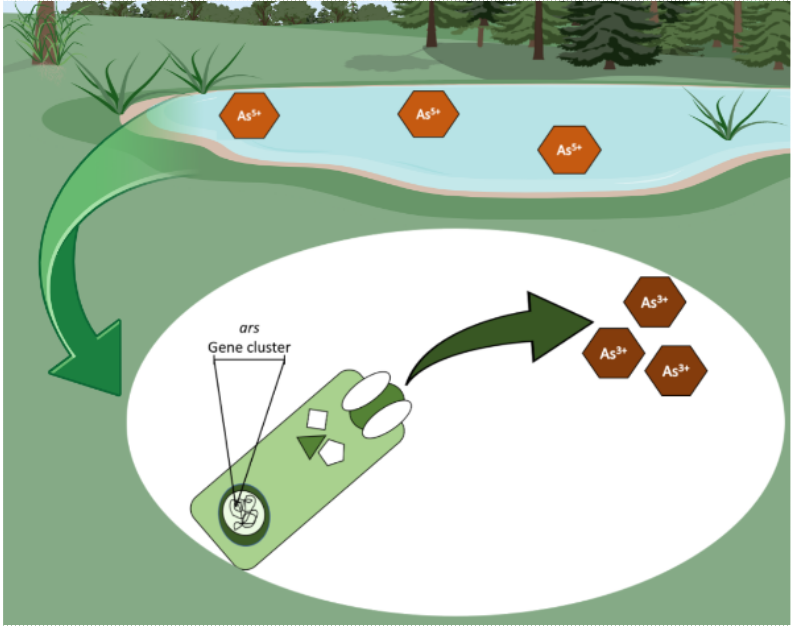Tag: bacteria
Nivolumab against lung cancer: How is the gut–lung axis involved?

The study of the gut microbiome, which is the total of all the microbes living in the intestines, has been shown to not only play an important role in the health of the bowel itself, but also in the health of distant organs such as the lungs. Lung cancer is one of the diseases that is often difficult to treat […]
Read More… from Nivolumab against lung cancer: How is the gut–lung axis involved?
Vermicomposting: Using the soil ecosystem in new places

Vermicomposting has gained popularity as a sustainable, environmentally friendly method for waste disposal and fertiliser production. Earthworms and soil microbiota work together to break down and reshape solid organic waste into a fertile humus. From small-scale beginnings, much research has been done to scale up and optimise the physical and biological aspects of the system. Dr Jorge Domínguez, head of the […]
Read More… from Vermicomposting: Using the soil ecosystem in new places
Plant life partners: Beneficial bacteria

The evolution of terrestrial plants from aquatic ecosystems came with challenges: adaptation to survive the harsh environments, and co-evolution with other life, such as bacteria. Bacteria are one of the most ancient forms of life on earth, and amount to about 13% of total biomass (measured as tonnes of carbon) seen on our planet. Land plants have evolved positive relationships […]
Exploring the transfer of antibiotic resistance genes within poultry litter

Antibiotic resistance is a major threat to human and animal health. Bacteria containing antibiotic resistance genes are found in poultry litter, usually from commercial chicken production. Since poultry litter is often used as a soil fertiliser, there is a risk that this antibiotic resistance could be transferred into the soil. Professor John Maurer at Virginia Tech University, USA, has shown […]
Read More… from Exploring the transfer of antibiotic resistance genes within poultry litter
From friend to foe: Food strains share their toxic genes in E. coli

Food-borne bacteria can cause life-threatening disease, yet it is still unclear why some strains are tolerated by the host. To find an answer, a project led by Professor Rosa del Carmen Rocha-Gracia (Benemérita Universidad Autónoma de Puebla, Mexico) and Professor Manel Camps (University of California Santa Cruz, USA) analysed the genetic diversity of Escherichia coli populations, comparing isolates from food […]
Read More… from From friend to foe: Food strains share their toxic genes in E. coli
Mapping ars gene clusters in arsenic-resistant bacteria

An operon by any other name Almost any operon (a unit of DNA that contains a number of genes controlled by a single messenger molecule) that acts against arsenic tends to have three major genes – arsR, arsB, and arsC. These code for a transcriptional regulator, a transmembrane efflux pump, and an arsenate reductase, respectively. The first protein, ArsR, oversees […]
Read More… from Mapping ars gene clusters in arsenic-resistant bacteria
Microbiomes – the key to a healthier planet?

Microbiomes are communities of microorganisms living on or in animals, helping to keep them healthy. Changes in the composition of microbiomes could make wildlife more vulnerable to diseases which may be zoonotic – transmissible to humans – so monitoring them could help us to predict outbreaks of disease and protect global health. Dr Andrew Bartlow and colleagues at the Los […]
Read More… from Microbiomes – the key to a healthier planet?
SecurePortIV®: The cyanoacrylate adhesive providing a new gold standard for all vascular access care

Around two billion peripheral intravenous catheters are inserted each year globally. However, a large percentage of these lead to complications, such as infections or becoming dislodged, requiring replacement in order for therapy to continue. Dr Sheng Zhang at Adhezion Biomedical, USA, has been involved in developing an adhesive, SecurePortIV®, which secures intravenous catheters by holding them in place and sealing […]
Are bacteria that secrete protein degradation enzymes responsible for preterm births?

Preterm births occur before the 37th week of gestation and are the leading cause of infant deaths around the world. Although there are many factors contributing to preterm labour, including multiple gestation and diseases such as diabetes, approximately 40% of cases are associated with bacterial infection of the uterus. Dr Laura Sycuro and her team at the University of Calgary, […]
Bacterial detection: A self-powered biosensing system driven by triboelectric nanogenerator

Preparation of the self-powered biosensing system driven by a triboelectric nanogenerator The self-powered biosensing system constitutes three parts: the biosensing system, the triboelectric nanogenerator (TENG), and the warning programme. Firstly, the biosensing system comprises the vancomycin modified indium tin oxide glass (ITO-Van), and guanidine functionalized multi-walled carbon nanotubes (CNT-Arg). The ITO glass has an etched conductive layer area, which is […]